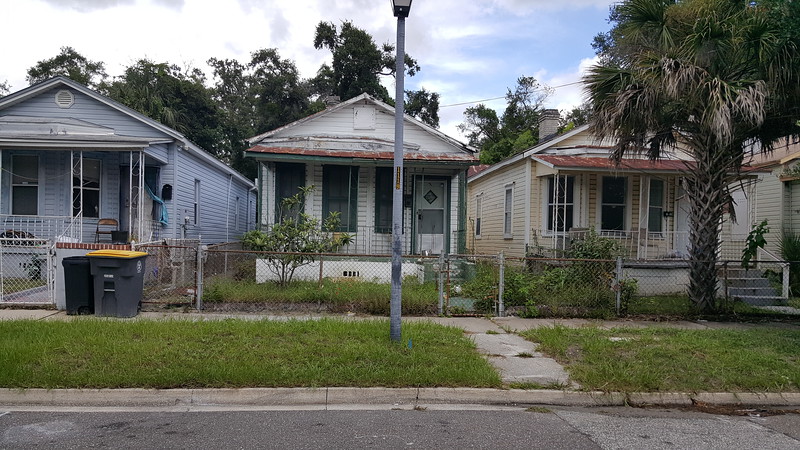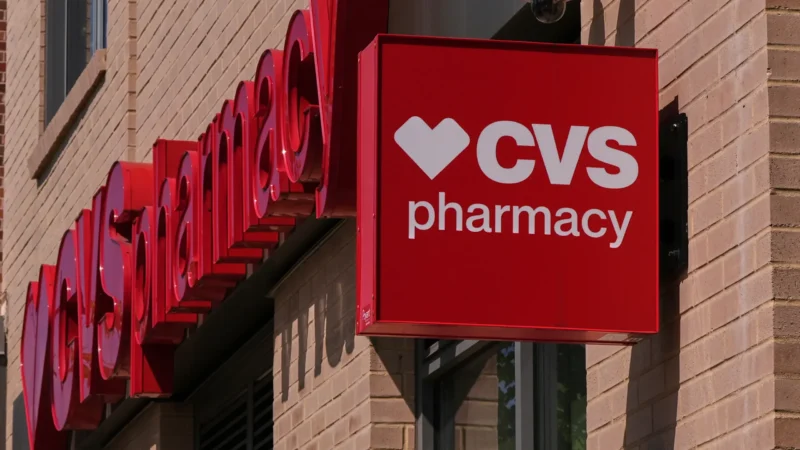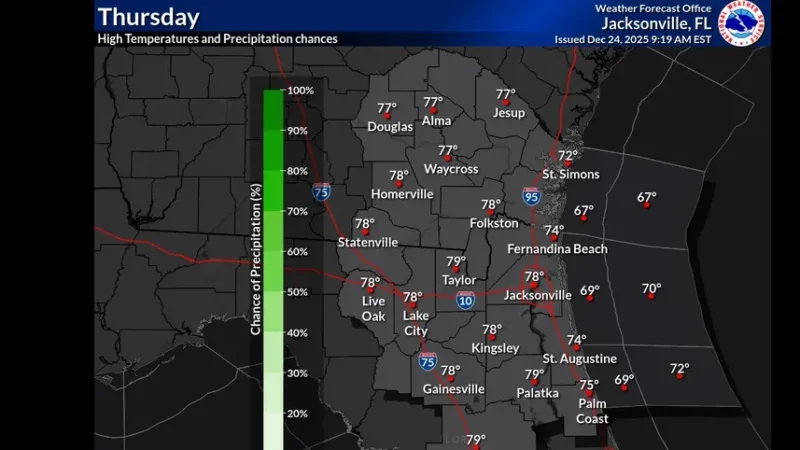
Who are the Gullah Geechee?
The Gullah Geechee people are the descendants of Central and West Africans who have traditionally lived along the coasts of southeastern North Carolina, South Carolina, Georgia and Northeast Florida. The African presence in Northeast Florida dates as far back as the 16th century, well before the 1607 founding of the British colonies, and included people from many different African societies.
The mixing of these diverse African peoples over time created the unique Creole Gullah Geechee culture, which has retained many African cultural expressions that can be experienced in our region’s religious institutions, arts and crafts, architecture, music and food. Although it’s little known or celebrated locally, Jacksonville is home to the largest concentrated population of Gullah Geechee descendants in the world. The culture has been preserved and sustained in long-standing, once-remote Gullah Geechee communities throughout the city that are part of the Gullah Geechee Cultural Heritage Corridor.
The Gullah Geechee impact on local culture has largely been overlooked and misunderstood. Here are six historic Gullah Geechee communities in Jacksonville that you may or may not be familiar with.
Brooklyn
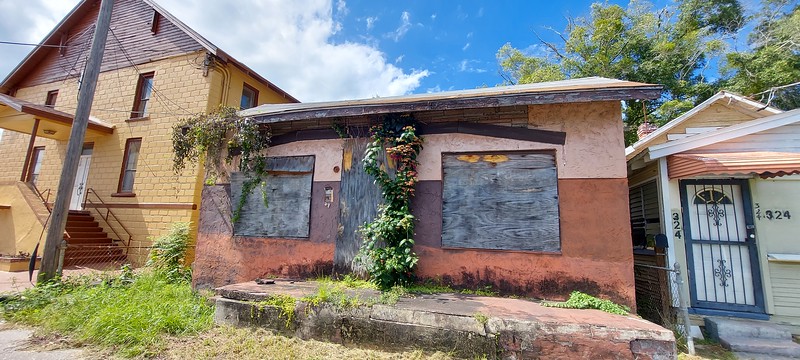
In 1801, Philip Dell received an 800-acre Spanish land grant for the establishment of a plantation on the south side of McCoys Creek and the west side of the St. Johns River. The plantation became known as Dell’s Bluff due to the presence of 16-foot bluffs along the west shore of the St. Johns River. Here, enslaved Africans cultivated corn and Sea Island cotton. During the Civil War, the property served as one of a few U.S. Colored Troops regiment campsites during the Union’s occupation of Jacksonville.
After the war, the former plantation was acquired by Confederate veteran Miles Price in 1868. Price sold the southern 500 acres of the plantation to John Murry Forbes for $10,000 in gold, and Forbes went on to develop his acquisition as the neighborhood of Riverside. In 1869, Price platted the northern portion of the former plantation as the neighborhood of Brooklyn. Adjacent to multiple rail lines, Brooklyn quickly emerged as a centralized destination for freedmen and women and their descendants. Brooklyn was annexed into Jacksonville with nearly 1,000 residents in 1887.
Characterized by narrow gridded streets, the neighborhood carried a Northern name, with east-west streets named after Confederate generals and north-south streets named after trees. By 1950, Brooklyn’s population had increased to more than 6,000 residents. By the end of the decade, Brooklyn fell into population decline as a large portion of its residents were removed to allow for the construction of Interstate 95. This urban renewal project became the first of many over the next six decades that reduced the neighborhood’s population and razed many of its structures. Largely replaced with modern development built within the last decade, the neighborhood still retains a collection of structures west of Park Street that date back to its Gullah Geechee heyday.
Cosmo
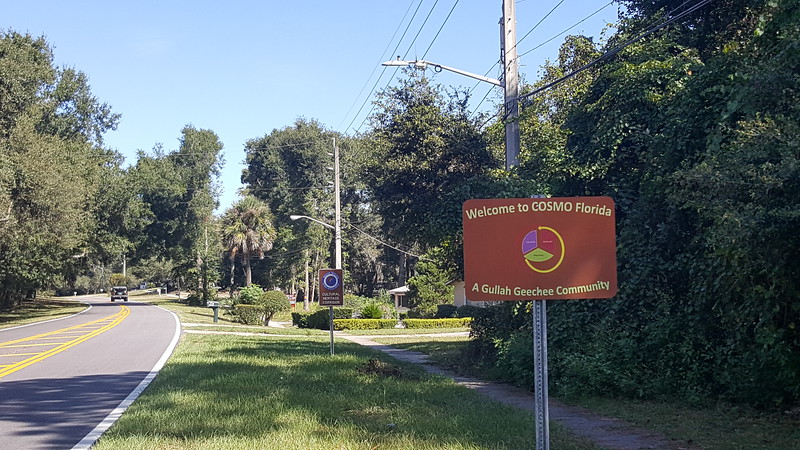
The settlement of Cosmo was established after the Civil War by newly freed Black families from coastal Florida, Georgia and South Carolina. Settler James Bartley and his wife Polly purchased 40 acres of land in Cosmo in 1877 and are recognized as the first African American landowners in Cosmo. Many Cosmo residents made a life for themselves by establishing a community around hunting, farming, mullet fishing, crabbing, shrimping and harvesting oysters at Mill Cove. At its height, the community boasted a post office and school.
Cosmo remained in isolation until the construction of the Mathews Bridge and the development of Arlington as a popular suburb during the 1950s. During the following decades, river dredging negatively affected Mill Cove’s marine line, while displacement and suburban gentrification have negatively affected the Cosmo community. Nevertheless, Cosmo survives, and historic sites in the Gullah Geechee community include the Palm Springs Cemetery, the Alexander Memorial United Methodist Church and several dwellings scattered in heavily wooded areas tucked between modern subdivisions.
Visit the Cosmo Preservation Association’s Facebook page to learn more about this unique historic Jacksonville community.
Eastside

Situated on land that was granted to Daniel Hogans in 1817, the Eastside is a collection of Gullah Geechee communities also known as Out East. Oakland, the oldest, was platted in 1869 by Jesse D. Cole. It was quickly settled by freedmen and women attracted by inexpensive housing and employment at the docks and sawmills along the riverfront. Many Gullah Geechee settlers resided in single and double tenement houses called shotgun homes. Built by African American architects and contractors, many of these wood-frame, tin-roofed structures include intricate woodwork along the eaves, similar to Victorian houses. Home to Old City Cemetery and the first public park established for Black residents in Jacksonville, well-known people who have lived in the Eastside include Abraham Lincoln Lewis, Zora Neale Hurston, A. Philip Randolph, and Robert “Bullet Bob” Hayes.
Additional Eastside plats, including Campbell’s Addition and Longbranch, were developed during the 1880s, and Florida Avenue emerged as the major commercial thoroughfare east of Hogans Creek. The physical landscape of the neighborhood was dramatically altered following World War II with the opening of the Mathews Bridge in 1953, the Haines Street and Commodore Point expressways in the 1960s, the Eastside Riot of 1969, and the Eastside-Springfield urban renewal program of the 1970s. Today, the Eastside is engaged in a variety of “withintrification” strategies intended to protect the community against gentrification and displacement.
Visit the Historic Eastside Community Development Corporation to learn more about the Eastside.
LaVilla
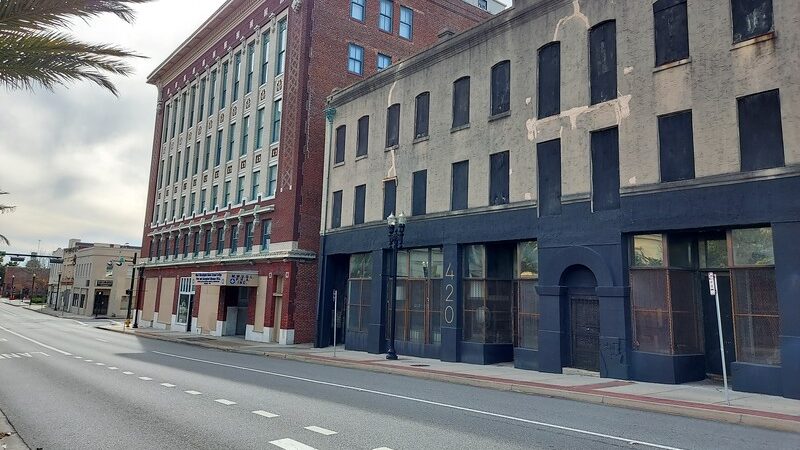
Adjacent to the Downtown Northbank, LaVilla is one of Jacksonville’s oldest Gullah Geechee communities. Named after the LaVilla Plantation, LaVilla was established as a town of its own in 1866 by Francis F. L’Engle. L’Engle served as LaVilla’s first mayor and by the time the community was annexed into Jacksonville in 1887, its population had increased to 3,000.
Anchored by Henry Flagler’s Jacksonville Terminal railroad station, LaVilla became a cultural exchange partner with New Orleans and emerged as a major epicenter for ragtime, jazz and blues during the early 20th Century. According to the Indianapolis Freeman, the first published account of blues singing on a public stage occurred at LaVilla’s Colored Airdome on April 16, 1910. Following the 1920s Harlem Renaissance, LaVilla became known by some as the Harlem of the South. Ultimately, LaVilla was largely destroyed by major urban renewal projects, including the construction of Interstate 95 during the 1950s and the 1990s River City Renaissance plan.
Visit the Ritz Theatre and Museum to learn more about LaVilla’s rich heritage and history.
Pine Forest

Located 4 miles upriver from Downtown, Pine Forest is a former rural community that has been engulfed by Jacksonville’s post-World War II sprawl. The development of Pine Forest dates back to the late 18th Century when Joshua Yallowley moved from Georgia to establish the Orange Bluff Plantation in 1773. Acquiring 500 acres of land along the St. Johns River, Yallowley and his uncle Captain John Fairlamb managed the construction and completion of the Kings Road between the Cowford Ferry and St. Augustine in 1774. Yallowley’s enslaved people cultivated citrus and harvested timber prior to his 1784 evacuation to the Bahamas, when Florida was returned to the Spanish.
Adjacent to Yallowley’s Orange Bluff, Englishman James Penman acquired what would become a 3,000-acre track along New Rose Creek called Jericho Plantation in 1774. A St. Augustine merchant, Penman’s plantation used 120 enslaved Africans to cultivate corn, beans, rice, indigo, lumber, turpentine, pitch and tar. In 1781, Penman sold Jericho and 56 of his enslaved to Denys Rolle and moved to Charleston. Rolle named the estate Chichester Plantation after his wife’s English family. When Florida was returned to the Spanish in 1784, both Orange Bluff and Chichester were abandoned by their planter families. In the case of Rolle, 42 of his enslaved perished in his attempt to relocate his holdings from Chichester to the Bahamas.
In 1793, the area became known as the Red Bank Plantation. Following the Civil War, freedmen and women from Red Bank and other nearby plantations settled around St. Augustine Road and New Rose Creek, establishing what is now known as Pine Forest. As early as 1866, Pine Forest had become home to a church established by the former enslaved. Straddling St. Augustine Road between Emerson Street and University Boulevard, the neighborhood retains much of its character and charm.
West Lewisville (Mixon Town)

The community of West Lewisville lies just west of Brooklyn. Also located on a portion of the former Dell’s Bluff Plantation, Miles Price platted West Lewisville in 1875 as a response to neighboring Brooklyn’s Black community’s quickly filling up. Originally isolated and rural, the 20-block community urbanized during the first decade of the 20th Century as a result of high African American housing demand following the Great Fire of 1901.
Due to discriminatory local zoning practices and redlining, West Lewisville became a desired location for heavy industry during the first half of the 20th Century. By 1950, its rows of frame shotgun dwellings found themselves adjacent to a slaughterhouse, poultry plant, and waste incinerator. By the end of the decade, a large swath of the neighborhood was removed to make room for Interstates 95 and 10. Also known as Mixontown, this historic Gullah Geechee community is now threatened by gentrification due to its proximity to Brooklyn, Five Points, the McCoys Creek Restoration project and the Emerald Trail.


